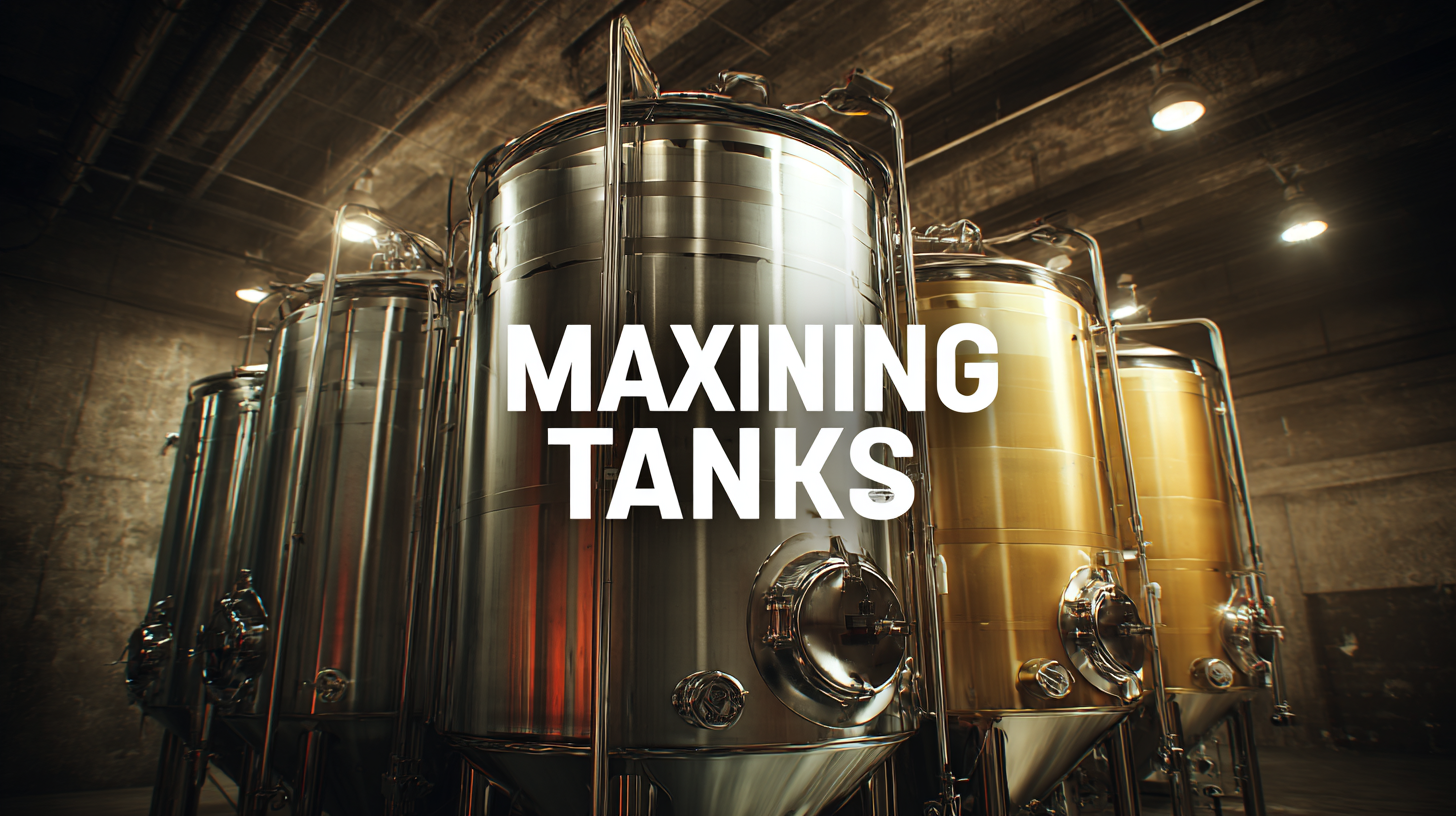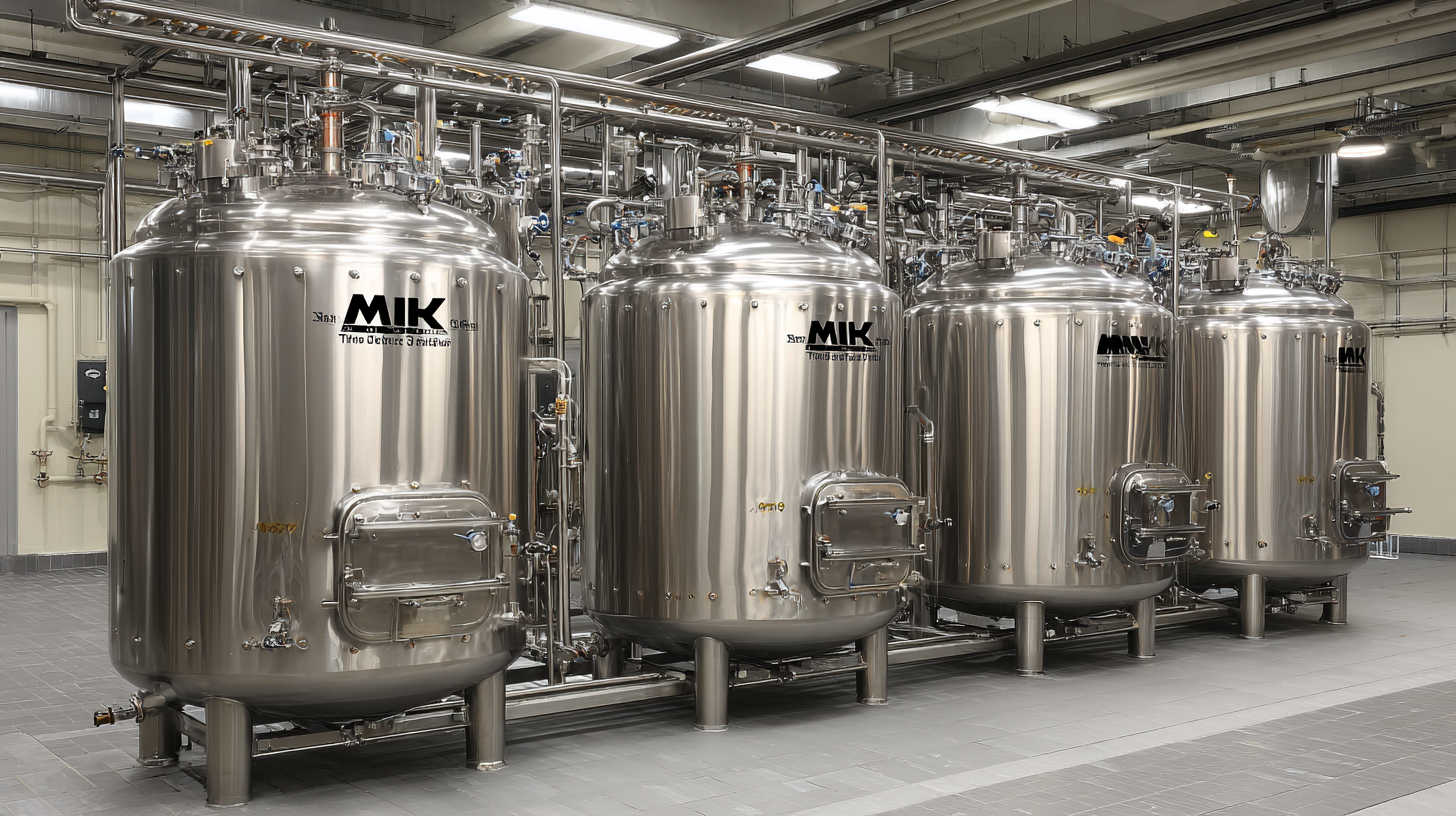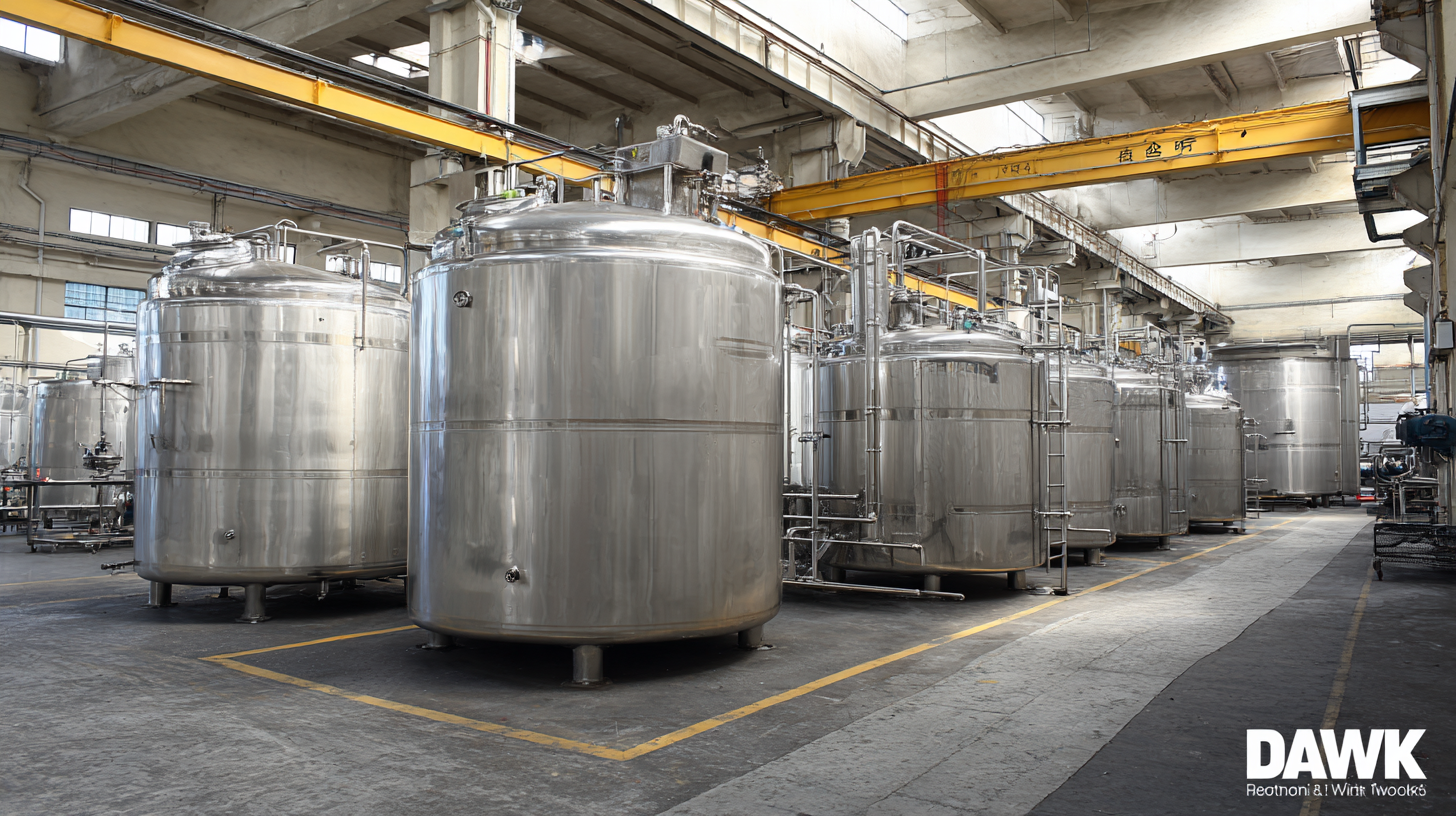
In the competitive landscape of manufacturing and food processing, choosing the right equipment is crucial for operational efficiency and product quality. Stainless Steel Mixing Tanks have become a cornerstone for businesses looking to maximize their production capabilities while ensuring durability and safety in their processes. According to a report by Grand View Research, the global market for mixing equipment is expected to reach USD 7.32 billion by 2025, highlighting the growing demand for innovative and reliable mixing solutions across various industries. When selecting the best Stainless Steel Mixing Tanks, it's essential to consider factors like tank design, capacity, and material quality, as these elements can significantly impact not only the mixing process but also the overall success of your business. This ultimate guide will unveil 15 critical secrets that will empower you to make informed choices and elevate your production standards.

When selecting stainless steel mixing tanks for your business, there are several key features to consider that can greatly influence your operation's efficiency and effectiveness. One critical aspect is the tank's construction quality. Look for tanks that offer a combination of durability and resistance to corrosion, ensuring they can withstand rigorous use and maintain product integrity over time. The design should also facilitate ease of cleaning and maintenance, which is essential for maintaining hygiene standards, especially in food and pharmaceutical applications.
Another important feature is the mixing capability. Assess the tank's impeller design and mixing technology to ensure it aligns with your specific needs. For instance, single-use mixing systems are gaining popularity due to their reduced contamination risks and ease of use, making them an ideal choice for various manufacturing processes. Lastly, consider the tank's size and capacity to ensure it meets your production requirements without compromising on space efficiency. By focusing on these essential features, you can choose a stainless steel mixing tank that will enhance your operational productivity and ensure quality output.
When selecting the best stainless steel mixing tanks for your business, understanding the various types of stainless steel is crucial. The most common grades used in manufacturing mixing tanks include 304 and 316 stainless steel. Grade 304 offers excellent corrosion resistance and is often suitable for food and beverage applications. On the other hand, grade 316 is known for its superior resistance to chlorides, making it ideal for more aggressive environments, particularly in chemical processing.

Tips: When choosing the right type of stainless steel, consider the specific applications and environments in which your mixing tanks will be used. If your processes involve corrosive materials, opting for 316 stainless steel may save you on maintenance costs in the long run. Additionally, assess the thickness of the steel, as this can affect the durability and performance of the mixing tanks.
Another key consideration is the finish of the stainless steel. A smooth finish not only enhances aesthetics but also makes cleaning easier and helps prevent contamination. Tips: Look for tanks with a brushed or polished finish to ensure optimal cleanliness and hygiene standards in your operations. Always verify the specifications with suppliers to ensure you are getting the right product for your needs.
When it comes to selecting the right stainless steel mixing tanks for your business, understanding the essential size and capacity considerations is crucial. The volume of your operations greatly influences the choice of tank. A careful assessment of production needs, such as batch size and product type, will help determine the appropriate tank dimensions. Too small a tank may lead to increased downtime and inefficiencies, while an oversized tank could waste valuable resources and space.
Moreover, as industries increasingly embrace advanced technologies and data-driven decisions, integrating this approach into your tank selection process can optimize operations. With a growing emphasis on skills-based organizations, the right tank size should not only facilitate efficient mixing and blending but also align with your workforce capabilities. Ensuring compatibility with automated systems can enhance productivity and streamline processes, making your investment in stainless steel mixing tanks a strategic advantage in the competitive landscape.
When selecting stainless steel mixing tanks for your business, the importance of sanitation and design cannot be overstated. In industries such as food and beverage, pharmaceuticals, and cosmetics, maintaining high sanitation standards is crucial. According to a recent report by the World Health Organization, improper handling and contamination can lead to significant economic losses, with an estimated $95 billion in foodborne illnesses reported annually in the U.S. alone. Investing in high-quality mixing tanks that are easy to clean and designed for optimal sanitation can significantly reduce these risks.

The design of the mixing tank also plays a critical role in ensuring efficient operations and maintaining hygiene. A well-thought-out tank design, such as those featuring rounded corners and smooth surfaces, minimizes dead zones where residues can accumulate, thus improving sanitation. A study by the American Institute of Chemical Engineers highlights that proper design not only enhances cleaning efficiency but also promotes uniform mixing, leading to better product quality. As industries evolve, those focusing on these key design and sanitation aspects will likely outperform competitors by delivering safer and higher-quality products.
When investing in stainless steel mixing tanks, businesses must strike a delicate balance between cost and quality. According to a report by the International Stainless Steel Forum (ISSF), the price of stainless steel has seen fluctuations, with an average increase of 15% over the past three years. This trend emphasizes the importance of considering long-term costs rather than just initial expenses. Choosing a tank made from high-quality stainless steel not only enhances durability but also reduces maintenance costs and downtime.
Moreover, the American Institute of Steel Construction (AISC) indicates that investing in higher-quality materials can lead to a return on investment (ROI) of up to 25% over five years, particularly in industries requiring stringent hygiene standards, such as food and pharmaceuticals. By selecting tanks designed for efficiency and longevity, companies can achieve significant cost savings while maintaining compliance with safety regulations. Balancing upfront costs with the quality of materials and construction will ultimately promote operational efficiency and product integrity.
